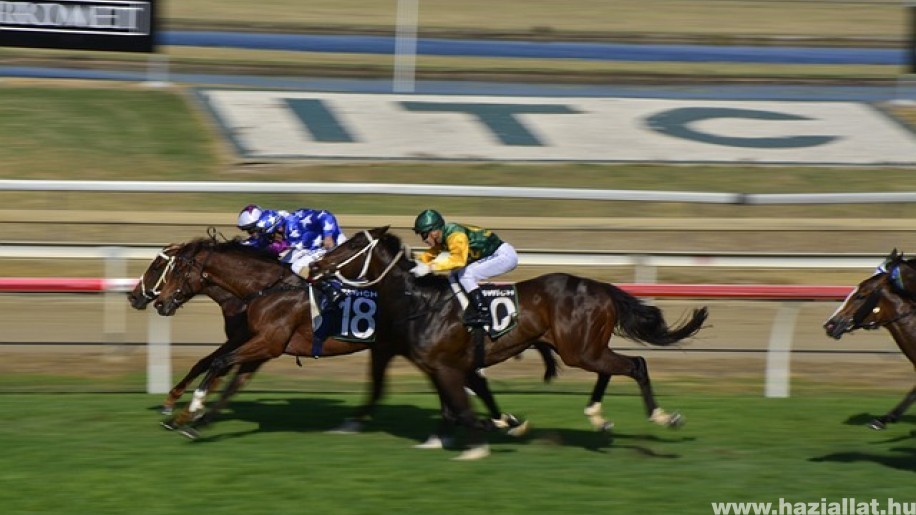

Értékelve: 1x
(5.0 pont)

Horseracing events may not make as much noise as the Wimbledon Grand Slam or the FA Cup Final, nor do punters wager as much on them as they do the wide selection of games typically found in casinos, but the sport remains one of the most popular industries in the United Kingdom. The Royal attachments and over-the-top fanfare hold excitement and a nostalgic appeal for attending major racing events, maintaining the “place to see and be seen” attraction that draws a crowd.
The 2023 Royal Ascot, which has roots reaching back to 1711, was attended by King Charles III, Queen Camilla, Kate Middleton, and Prince William. The Grand National that same year brought in over 150,000 spectators. Despite the long-held fascination with the industry, interest in horseracing and attendance has started to dwindle. A number of factors have contributed to this, but one of the most notable is the debate over the quality of care and treatment racehorses receive.
Animal rights protestors have disrupted horseracing events, including the most prestigious ones like the Grand National and Epsom Derby, by occupying the racetracks or courses. While the industry’s regulator, the British Horseracing Authority (BHA), has largely disagreed in the past with the notion that the horses are mistreated or that their policies condone mistreatment, it has more recently acknowledged that they could be doing better.
Organisations like Animal Aid have researched the treatment of horses throughout history and have pinpointed a few aspects they deem concerning. The BHA has responded to these concerns by referring to their passionate team of caretakers and the wide availability of vets and nurses at their disposal, highlighting their care and dedication to the animals and their strategy to do better. Let’s take a look at a few relevant areas of concern. There are 14,000 horses in training as part of the BHA, and every year, 7,500 enter and retire from racing in Britain. These numbers mean that efficient breeding of healthy horses is essential to keep the industry operating. When it comes to breeding, certain techniques are used to protect animals while also prioritising reproduction, and these techniques are criticised for the strain they place on stallions and mares. Stallions are often highly prized and highly insured, and in the name of protecting their physical well-being and value, they’re primarily kept in isolation and in small pens to reduce potential injuries. As a result, Animal Aid is concerned about their quality of life. Mares, who have an 11-month pregnancy, are typically impregnated yearly. The frequency of these pregnancies is more demanding on their bodies than their natural breeding cycles, which would typically see them birthing a foal every two years. National Hunt Racing, or horse jumping, is a popular event type that challenges jockeys and horses to complete a series of jumps over fences and ditches. As such events require awe-inspiring skill, they are known to challenge the agility and speed of horses. However, they can also be incredibly dangerous for horses. Races of this style have resulted in many horse fatalities, particularly the Grand National and Cheltenham, which have experienced nearly 100 horse fatalities since 2000. The BHA has conducted reviews of jump racing courses, including the Cheltenham, and has taken action. As part of a larger horse welfare initiative, it has also been working to strengthen the Jump Racing Risk Model (JRRM). Flat races are all about speed, and while it seems they pose fewer risks to horses than courses requiring jumping, they have also caused fatalities, resulting in the loss of approximately 50 horses annually. Addressing these fatalities has also been incorporated into the BHA’s welfare initiatives. The use of whips in racing, including those deemed welfare-friendly, has been controversial. Some studies suggest that whip use does not enhance a horse’s performance, while others state that whips help ensure the horses’ safety by preventing potentially dangerous mistakes during a race. The BHA does allow the whipping of racehorses, though with restrictions. When it comes to whether they’re wholly good or bad, the BHA and Animal Aid have differing opinions — though both agree that they’re used too frequently. The BHA’s Horse Welfare Board has been following a five-year strategy entitled “A Life Well Lived.” It aims to improve the quality of life for horses in every aspect the BHA has control over, which encompasses everything from course design to stall conditions, throughout the entire lifetime of the animals. Part of the work of this board has included the aforementioned JRRM and flat racing reviews and acknowledging that whips are often overused. The board has been actively working to address the issues brought to light by protestors and animal rights groups and aims for more transparency on these issues as well as tracing and bettering the overall welfare of the horses in British racing for the entirety of their lives.The Treatment of Race Horses
Breeding
Horse Jumping (AKA National Hunt Racing) and Flat Races
Whipping
Horse Welfare Board
Conclusion
The treatment of racehorses in British racing has been a subject of tension and debate for decades now. The work of animal protection groups has spotlighted serious concerns in the treatment of horses, and Britain’s largest horseracing authority has acknowledged the issues that have been brought to its attention. The BHA is working towards fulfilling a strategy that increases the quality of care horses receive throughout their lives.
